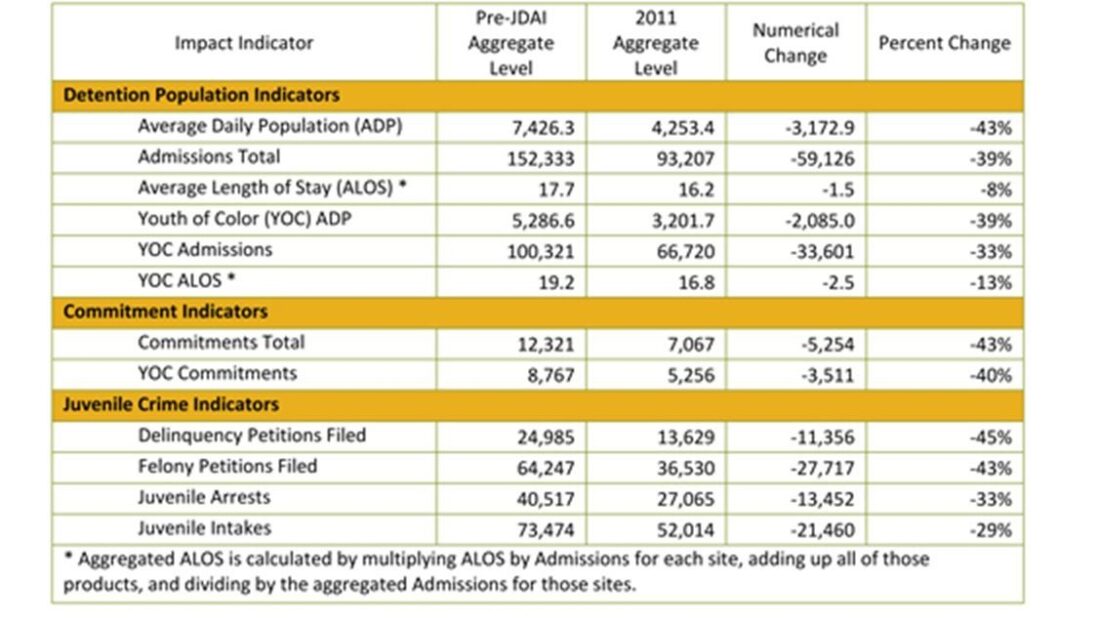Preliminary Analysis Shows Average Daily Detention Populations Reduced by 43% Across JDAI Sites

The Juvenile Detention Alternatives Initiative (JDAI) is a nationwide effort of local and state juvenile justice systems, initiated and supported by the Annie E. Casey Foundation, to eliminate unnecessary and inappropriate use of secure detention for juveniles. Begun in 1992, JDAI has grown to become the most widely replicated juvenile justice initiative in the United States, reaching youth in more than 200 counties across 39 states and the District of Columbia as of 2013. JDAI sites submit results reports for two primary purposes: (1) to provide an annual opportunity for sites to assemble and report measures of detention reform progress that can be shared with local system stakeholders, policy makers and the community; and, (2) to generate initiative-wide aggregate measures and inter-site comparisons to deepen our understanding of the overall impact, influence and leverage of the detention reform movement.
As of 2012 JDAI sites had:
- Substantially reduced reliance on secure detention. In the aggregate, sites reduced the number of youth detained on an average day by more than 3,000 compared with pre-JDAI levels, a reduction of 43%.
- Reduced annual admissions to detention by more than 59,000 youth compared with pre-JDAI admissions, a decrease of 39%.
- Reduced detention among youth of color. More than half of the reduction in detention admissions occurred among youth of color, who are historically over-represented in secure detention across the US. In the aggregate, JDAI sites detained 39% fewer youth of color than they did prior to JDAI. However, youth of color are still detained at substantially higher rates than other youth. Adjusting for demographic changes, JDAI sites have reduced detention among youth of color by about the same proportion as all other youth; but large racial and ethnic disparities persist.
- Reduced their commitment of youth to state custody. As of 2012, JDAI sites had reduced the number of youth they commit to state custody by 43%, or by more than 5,200 youth annually.
- Experienced reductions in juvenile crime. JDAI sites use a variety of indicators to gauge the overall level of juvenile crime. Regardless of the indicator used, JDAI sites report substantially less juvenile offending, providing evidence that detention can be reduced without eroding public safety. Juvenile crime indicators in 2012 were down by an average of 36% from pre-JDAI levels.
- Secured $44 million in financial resources above and beyond their JDAI grants to support detention reform. This represented a 10% increase since 2010, and reflected a reduction in local government funding but a substantial increase in funding from state and federal sources.
These results depict an initiative that has accomplished a great deal, and still has much left to accomplish. It documents the progress that JDAI sites have made in reducing their reliance on secure detention and advancing juvenile justice reform; and it also shows that sites continue to grapple with challenges in several areas of performance, most notably the stubborn persistence of racial and ethnic disparities in the use of detention.
On the whole, the results that JDAI sites have achieved are gratifying and impressive — and those achievements should give sites renewed confidence and deeper commitment to tackle the challenges that remain.





